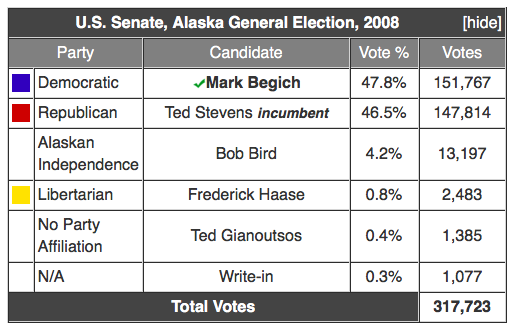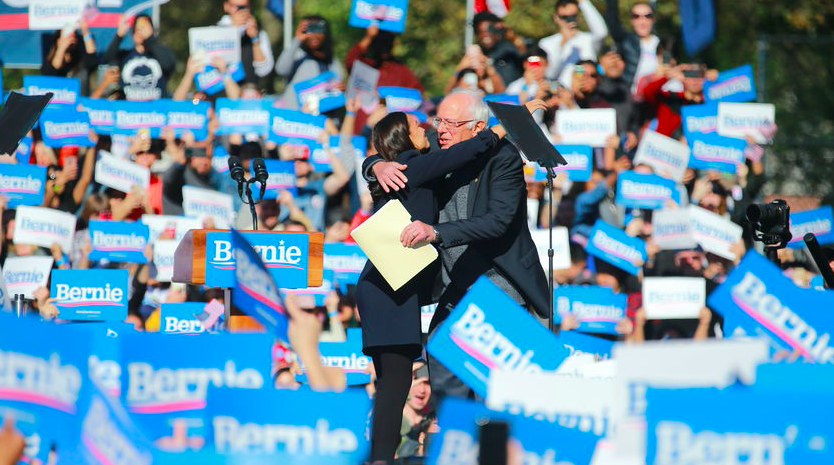RANKED VOTING, MAIL-IN, YOUTH VOTE, GENDER CHOICE
Alaska Democrats are not going to caucus in gymnasiums to determine who their nominee is for president this year.
They are adopting a plan similar to that used by Alaska Republicans, which is a caucus-by-ballot. You don’t stand around a gym for hours, you simply mark your ballot and get on with your life. But it’s not a state-run or state-funded operation. It’s operated by volunteers — political volunteers.

The Alaska Democratic Party barely received approval from the Democratic National Committee in time to execute its plan, and is now scrambling to get enough volunteers and materials to make the process go smoothly. The clock is ticking and the credibility of the party is certainly on the line after the disastrous experience Alaska Democrats had with their own party in 2016. Back then, the delegates that went to national convention didn’t vote for Bernie Sanders, as they had their instructions to vote for Hillary Clinton.
Party insiders still are not thrilled that the DNC held onto Alaska’s new primary plan for six months before issuing its approval, giving the state party little time to get their logistics in place, as well as their people, their training, and their checks and balances. Their first big deadline is less than two weeks away.
For now, the Democrats’ struggle seems to be to set up meetings in every one of the 40 House district to try to get the word out about how it’s going to work this cycle.
Details have begun to emerge as to how Democrats will nominate their presidential candidate:
All presidential candidates wanting to appear on the Democrats’ private primary ballot must file with the the Alaska Democratic Party by Jan. 24, 2020. There is a fee of $2,500, which will help the party pay for the logistics and a coordinator who has yet to be hired.
All registered Democrats in Alaska will receive a postcard from the Alaska Democratic Party about six weeks before the primary polling process begins.
That postcard will be mailed on Feb. 19, and will describe how to cast an absentee ballot or how to vote in person at one of the several voting centers that will be set up around the state. The postcards will arrive around Feb. 20-21, giving absentee participants little time to send in a request for a mail-in ballot.
Absentee ballots must be postmarked by the voters by March 24 to be counted.
On April 4, the Democrats will hold in-person, caucus-by-ballot voting from 10 am until 2 pm at centers in these communities and boroughs: Anchorage, Fairbanks, Juneau, Mat-Su, Kenai, Dillingham, Bethel, Nome, and Kotzebue. The voting will be overseen strictly by volunteers; there are no paid staffers in most of this process. Ballot security will be an issue. People can register as Democrats on the spot and then vote in this party process.
Democrats who find themselves in other communities can choose to vote at any of the sanctioned Democrat polling stations — they do not need to vote in their home community or precinct.
RANKED VOTING, HERE THEY COME
Democrats will also roll out “ranked choice” voting for their private primary process.
Ranked voting in Democrat-run private primaries being experimented with in Alaska, Hawaii, Kansas, and Wyoming this year. Nevada Democrats will use it for early voters in their 2020 caucuses.
CONFUSED? RANKED CHOICE, THE ICE CREAM ANALOGY
Many people are confused by ranked-choice voting. The ice cream analogy is one of the easiest to understand:
Suppose you are voting for your favorite ice cream: Chocolate, Vanilla, Strawberry are the choices.
The final vote is Chocolate wins with 40 percent of the vote, Vanilla comes in with 36 percent, and Strawberry has 24 percent. But none gets 51 percent.
The Strawberry vote is tossed out as the lowest vote getter.
The second choice of those Strawberry voters went 70 percent for Vanilla and 30 percent Chocolate.
Now, 70 percent of the 24 percent Strawberry voters is awarded to Vanilla, and 30 percent of the 24 percent of Strawberry voters is given to Chocolate.
That means Vanilla now gets 17 more votes. Voila! 36 plus 17 = 53 percent of the vote, so Vanilla wins because Chocolate, once ahead, now only has 47 percent of the vote.
TOP CHOICE LOSES
In our ice cream analogy, voters who selected the least favorite ice cream as their first choice have their votes added to the totals of their second favorite ice cream, allowing them to vote twice. And although Chocolate was the favorite, when Vanilla and Strawberry combined their votes, they were able to topple Chocolate.
Ranked choice voting is something that the liberal Outside-funded “Alaskans for Better Elections” is trying to put into law in Alaska through a ballot initiative.
But it could work against the Democrats in Alaska, and their primary experiment will tell them a lot more about whether they want to go down that road.
In 2008, when Sen. Ted Stevens was being challenged by Mark Begich, Stevens would have won under the ranked-voting scenario. The spoilers in the race were the Libertarian and Alaska Independence Party candidates. Those Libertarian and AI voters would probably have ranked Stevens as their second or third choice, rather than Begich:

For the Alaska Democratic Party’s upcoming experiment in ranked voting, the party could have five candidates on its caucus ballot.
Depending on whether Bernie Sanders or another Democrat gets a ground game going in Alaska, ranked-choice voting could mean that the more radical Democrat nominees prevail for Alaska Democrat delegates heading to the national nominating convention.
Why? A person voting for Bernie Sanders (as 82 percent of participating Democrats did in the 2016 Democrat Party caucuses) will not likely choose Joe Biden as a second choice, but will choose someone like Elizabeth Warren. Likewise, a Joe Biden voter will probably not pick Bernie Sanders as their second choice, if they have someone like a Michael Bloomberg or Tom Steyer on the ballot.
The youth vote could also be a factor: All voters who are 17 years old and who would turn 18 by the General Election will be allowed to participate, which may further skew the vote for Sanders in the upcoming vote.
Results of the Democrats’ private primary will be announced before midnight on April 4. Any candidate getting more than 15 percent of the ultimate tally could be entitled to “soft” bind a delegate for the national convention.
DEMOCRATS WILL STILL CAUCUS
Each House district Democrat committee will hold caucuses on Saturday, April 18 to elect officers and delegates for the 2020 state convention, which will be held in Fairbanks this year on May 15-17.
Delegates elected to the state convention will elect delegates to the national convention, July 13-16 in Milwaukee, Wis.
The Democrats’ delegate selection process is going to be gender-sensitive, to the point that it may serve to disenfranchise natural-born women in favor of transgendered individuals who are identifying as women. (According to data from the Social Security Administration, transgendered men-to-women outnumber women-to-men nearly two-to-one.)
“To ensure the district-level delegates are equally divided between
men and women (determined by gender self-identification) delegate positions within each district will be designated by presidential preference beginning with the highest vote-getting presidential preference. This assignment of delegate positions will continue with the next highest vote-getting preferences in descending order, with positions assigned to either male and female,” the Democrats’ manual reads.
The manual, approved by the national party, states that in the case of people who don’t want to choose a gender, they will not be required to: “In the case of non-binary gender delegates, they shall not be counted in either the male or female category.”
The DNC in December awarded the Alaska Democratic Party one additional at-large delegate for the 2020 national nominating convention. In 2016, the Alaska Democrats sent 20 delegates to the national convention.

Whatever. How do you pick a loser?
Democrats get crazier every day. Dems know they can’t win straight out, so the new gambit is “baffle ’em with bull”. The ‘rank’ (like a bad smell) voting scheme definitely falls into that category. The deep pocket/s that finance the idiots seems to be an abyss, not a pocket. Lots of money (outside) to throw around. Remember “run, Lisa run”? Virtually all outside money behind it. It all fits together into one big push for socialism, financed by people who made their fortunes with capitalism. They must figure on being on top when the ‘hammer and sickle’ falls on America. The lure of ‘free stuff’ is a powerful motivator for those too lazy or indifferent to work. Who needs to work when you get all that ‘free stuff’ and have someone else pay. With the entire “public sector” workforce, assorted outsiders, wingnuts, and democrats with tons of outside money, conservatives will need every single one of us behind them and voting. Our only chance to stop the madness. It’s not nice to even imagine what Alaska and America will be like if they lie, cheat and manipulate enough for the win. This isn’t just Alaska. America is at stake and it appears they will stop at nothing to make our State and Country into a socialist pig sty. We must fight back or we’re lost. The most effective and logical way to do that is to vote. Let’s not talk about the next best way yet.
I got a headache trying to follow this…
With ranked choice voting, Begich would never have won the Anchorage Mayor race way back then.
In my opinion this is more Liberal bs trying to overhaul our election process to get their way.. Democrat volunteers will be the ones over seeing things and how can they be trusted? They can’t! This is one big mess… Watch for more corrupting because it’s happening!